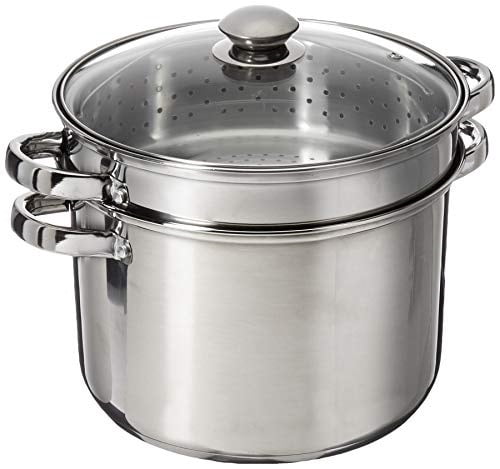


But for larger, deeper sinks, a heavier gauge steel will be required. For example, a lighter gauge steel may be perfectly fine for a small hand sink. So a 14 gauge stainless steel is vastly more durable than a 22 gauge steel.Ĭhoosing the proper gauge of steel for your application is extremely important. But unlike traditional scales, lower numbers indicate thicker sheets of metal. Again, you might think that higher numbers indicate thicker steel. The gauge refers to the thickness of the stainless steel. So it is natural for people to believe that a higher gauge of steel is better. With a lot of things, we think that a higher number is better. Gauges of stainless steel are the thing that seems to most confuse people. Should You Use a Flatware Retriever? Gauges Explained However, by choosing the right type of stainless steel for your application and applying basic care and maintenance, you can greatly reduce the likelihood of any type of corrosion. It appears as tiny pits on the surface of the steel and, left unchecked, can affect both the look and performance of the steel surface. A common type of corrosion referred to as “ pitting” can occur when a stainless surface is not properly cared for or is exposed to corrosive agents for too long. In a restaurant setting, there are any number of chemicals or other substances that can cause corrosion. You should also be aware that rust is only one type of corrosion. Because of its chemical make-up, stainless steel is less likely to rust. There is a common misconception that stainless steel is some sort of miracle metal that never rusts. It is the different combinations of these materials that give rise to the different properties of stainless steel. Suffice it to say that stainless steel is a combination of metals and other elements. Beyond that, the alloy can contain a number of other elements in varying amounts including nickel, silicon, manganese, titanium, molybdenum, nitrogen, niobium, and others. In addition, the alloy can only have a maximum of 1.2% carbon to be considered stainless. The chromium forms an ultra-thin layer on the steel that is referred to as the “ passive layer.” This passive layer is the key to preventing rust and other corrosion. This combination with chromium is what gives stainless steel its resistance to corrosion. It is a term used for a group of iron-based alloys (a metal made by combining two or more metallic elements) that contain a minimum of 10.5% chromium. Is Galvanized Steel the Same as Stainless Steel?.Specific Steel Types Found in Foodservice Operations.So let’s get started exploring the finer points of stainless steel and its associated uses. For such a common material, there is a lot of potential confusion. Even if you are a relative newcomer to the foodservice industry, you have heard the term “ stainless steel.” But even industry veterans are often undereducated about the finer points of stainless steel and its uses.


 0 kommentar(er)
0 kommentar(er)
